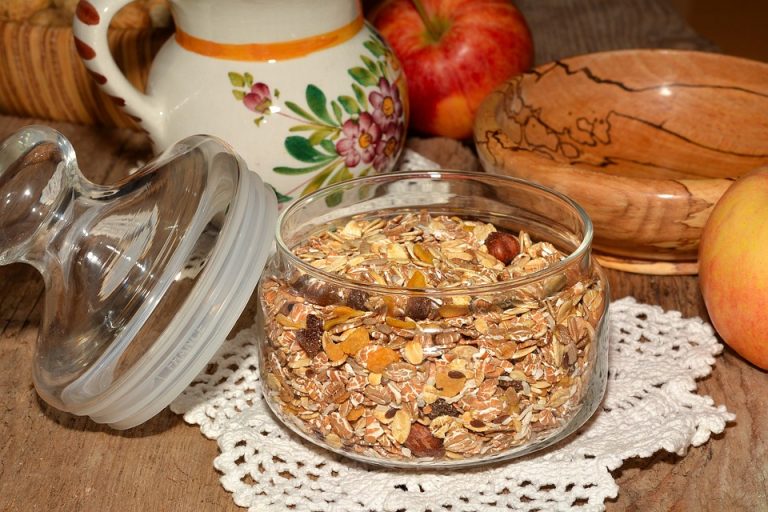7 Ways Apple Cider Vinegar For A1c Can Help
Apple cider vinegar for A1c is a simple, affordable tool you can add to your routine to support healthier blood sugar readings. It’s raw, tangy, and backed by science that shows benefits for post-meal glucose handling and long-term markers like A1c. If your days are measured in numbers and worry, this is a practical, everyday strategy worth understanding.
Why This Matters To You
You don’t need permission to care for your body. Lowering your A1c even a fraction can change medication needs, reduce complications, and give you peace. That’s where apple cider vinegar for a1c steps in: it’s not a cure, but it’s a real, evidence-informed habit that helps blunt glucose spikes and improve metabolic flexibility.
How To Read This Guide
I’ll walk you through seven clear ways apple cider vinegar for a1c can help, how to use it safely, what the research actually says, and what to tell your clinician. You’ll get no-nonsense tips, quotes from experts, and links to the studies so you can see the data yourself.
Contents
Apple Cider Vinegar For A1c: 7 Ways It Helps
1. It Lowers Post-Meal Blood Sugar Spikes
Post-meal spikes are where most damage happens. Vinegar slows the breakdown of complex carbs and delays gastric emptying, which smooths the glucose curve after a meal.
Several clinical trials observe that consuming vinegar with meals reduces postprandial blood sugar. For people who struggle with higher readings after bread or pasta, adding apple cider vinegar for a1c into that meal routine can make a measurable difference.
Use it as a small dressing, a diluted shot before a meal, or a splash in soup. Start slowly — a teaspoon diluted in water, then build to one to two tablespoons if tolerated.
2. It Improves Insulin Sensitivity
Insulin sensitivity is the key to using glucose efficiently. When your cells respond better to insulin, your pancreas breathes easier.
Research shows that regular intake of apple cider vinegar for a1c can improve insulin action in people with insulin resistance and in those with type 2 diabetes. That’s how a tiny habit helps beyond just blunting spikes: it helps your body do the work it’s supposed to do.
Stack this behavior with exercise and strength training for a stronger cumulative effect. The vinegar helps; movement seals the deal.
3. It Helps Lower A1c Over Time
A1c is the average of your blood sugar for the last three months. Small improvements compound.
Clinical trials and meta-analyses report modest but meaningful reductions in A1c and fasting glucose with consistent vinegar use. That isn’t a miracle cure, but when combined with diet changes, it can nudge your A1c into a healthier range.
Remember: consistency matters. A tablespoon daily over weeks shows benefits. Don’t expect overnight miracles — expect reliable progress.
4. It Supports Weight Management
Apple cider vinegar for a1c also plays a role in appetite control and satiety. People who include vinegar tend to eat fewer calories at the next meal. Less grazing means fewer peaks.
Being even a few pounds lighter improves insulin sensitivity and A1c. The vinegar isn’t slimming by itself, but it helps you make choices that lead to weight loss and metabolic gain.
Combine it with high-protein breakfasts and plenty of fiber to keep hunger and blood sugar steadier all day.
5. It Lowers Fasting Glucose
Fasting glucose is a wake-up number. Studies reveal that taking apple cider vinegar for a1c before bed or before breakfast can lower fasting glucose in the morning.
This effect likely comes from improved overnight insulin sensitivity and reduced hepatic glucose output. For many, this small evening ritual reduces those stubborn fasting readings that don’t budge.
Try one tablespoon diluted in water before bed, but check with your clinician if you take insulin or sulfonylureas to avoid nighttime hypoglycemia.
6. It’s Affordable, Accessible, And Easy To Use
You don’t need expensive supplements or specialty foods. Raw, unfiltered apple cider vinegar for a1c with “mother” is widely available and inexpensive.
Make a habit: vinaigrette on salads, a diluted sip before meals, or a splash in a cooling tonic. Habit-building beats perfect rules. When it’s easy, you’re more likely to keep it up—and that’s how results happen.
Always dilute it. Straight vinegar can erode tooth enamel and irritate the esophagus. Use a straw, rinse your mouth, and don’t swallow it neat.
7. It Fits Into A Broader, Evidence-Based Lifestyle Plan
Vinegar is not a lone savior. It’s a complement. When combined with carbohydrate control, fiber-rich foods, consistent movement, and medication as prescribed, apple cider vinegar for a1c becomes part of a reliable strategy.
Clinicians from major centers and publications like Harvard Health and diabetes journals discuss vinegar as an adjunct — not a replacement — for standard care. It’s pragmatic, safe for most, and easy to trial.
How To Use Apple Cider Vinegar Safely
Start slow. Dilute 1 teaspoon in 8 ounces of water and try it before a meal. If tolerated, move to 1 tablespoon diluted. Keep daily intake to 1–2 tablespoons.
Protect your teeth and throat by diluting, sipping through a straw, and rinsing your mouth after. People with gastroparesis or acid reflux may need to avoid it or use a smaller amount.
If you take medications that lower blood sugar, especially insulin or sulfonylureas, tell your healthcare provider before starting regular vinegar use. They may need to adjust dosing to prevent low blood sugar.
For people with chronic kidney disease or severe electrolyte issues, check with your physician. Vinegar is generally safe but medical context matters.
Practical Ways To Add It To Your Day
- Make a breakfast tonic: 1 tablespoon in a tall glass of water with a squeeze of lemon.
- Dress your salads: Swap heavy dressings for a simple apple cider vinegar for a1c vinaigrette with olive oil and mustard.
- Before a carb-heavy meal: Sip a diluted tablespoon 10–15 minutes before you eat.
- Night ritual: If your clinician signs off, try a diluted tablespoon before bed to help fasting glucose.
Small, repeatable rituals beat dramatic one-offs.
What The Research Says
Multiple randomized trials and meta-analyses report modest reductions in fasting glucose and A1c with regular vinegar intake. Diabetes researchers point to mechanisms like slowed gastric emptying, enzyme inhibition during carb digestion, and improved peripheral insulin sensitivity.
For a clear overview, read the summaries from sources such as Diabetes Care and research compiled by health centers at major universities. These sources explain both the potential and the limits of apple cider vinegar for a1c.
Real People, Real Results
I hear from people who lowered their A1c by small but clinically meaningful amounts—combined with portion control and a weekly walk. One woman told me she avoided a medication increase after adding an apple cider vinegar for a1c routine and working with her dietitian.
Stories don’t replace trials, but they show how humans make changes work. The vinegar becomes a consistent, nonjudgmental tool in the toolbox. It doesn’t shame. It helps.
Common Concerns And How To Handle Them
Some report digestive upset or worsening reflux. If that happens, reduce the dose or try taking it with food. Tooth enamel erosion worries are valid; use a straw and rinse afterward.
If you’re on blood sugar–lowering meds, the risk is real: monitor your readings closely and communicate with your clinician. Adjustments are sometimes needed.
Pregnant and breastfeeding people should consult their clinician before adding new supplements or routines.
Bottom Line
Bottom Line
Apple cider vinegar for a1c is a low-cost, low-risk habit that can help reduce post-meal spikes, improve insulin sensitivity, lower fasting glucose, support modest weight loss, and contribute to lower A1c over time. Use it as an adjunct to proven strategies—balanced meals, movement, medication when needed, and clinician oversight. Start small, dilute, and pay attention to how your body responds. When you pair consistent small habits with smart medical advice, you change your numbers and your life.
Be kind to yourself. Try one change for four weeks. Track your numbers. Learn what works.
FAQ
Can apple cider vinegar for a1c replace my diabetes medication?
No. Apple cider vinegar for a1c is an adjunctive habit, not a substitute for prescribed medications. Always discuss changes with your clinician before altering doses.
How much apple cider vinegar for a1c should I take daily?
Most studies use 1–2 tablespoons per day, diluted. Start with a teaspoon and work up as tolerated. Protect your teeth and throat by diluting and rinsing afterward.
Will apple cider vinegar for a1c make me feel better right away?
You may notice fewer post-meal spikes quickly, but A1c improvements take weeks to months. Consistency matters more than perfection.
Is raw, unfiltered vinegar better?
Raw, unfiltered apple cider vinegar with “mother” is commonly used in studies and preferred by many for its minimal processing. The active compounds are present in the unfiltered varieties.
Can children or pregnant people use apple cider vinegar for a1c?
Consult your pediatrician or obstetrician. This routine is generally reserved for adults, and pregnancy requires individualized care.
— — —
References
The National Institutes of Health provide a clinical review of vinegar and blood sugar effects, which discusses study designs and outcomes (https://www.nih.gov).
Harvard Health Publishing summarizes vinegar’s effects on blood sugar and weight and offers practical safety advice (https://www.health.harvard.edu).
Diabetes Care and related peer-reviewed journals include trials and meta-analyses detailing the impact of vinegar on fasting glucose and A1c (https://care.diabetesjournals.org).
The American Diabetes Association includes guidance about lifestyle interventions and managing A1c that complements the use of apple cider vinegar (https://www.diabetes.org).








